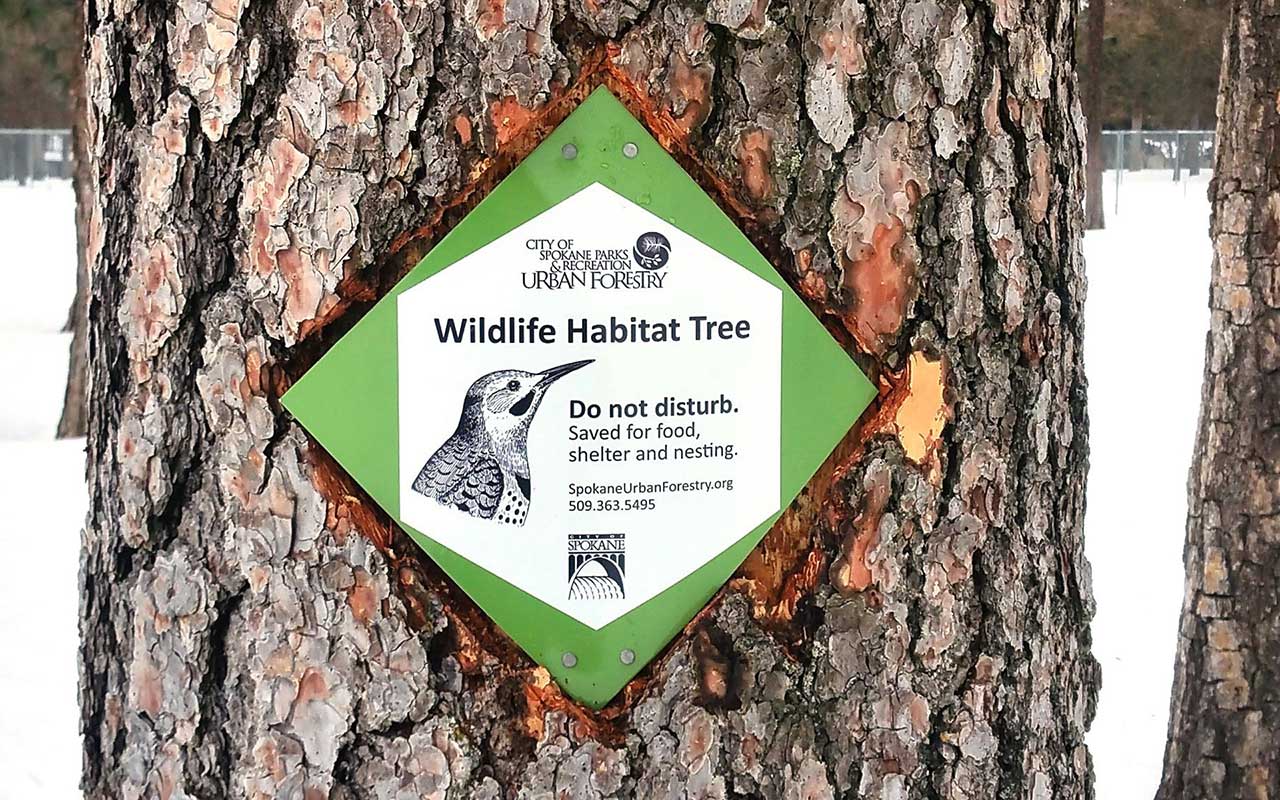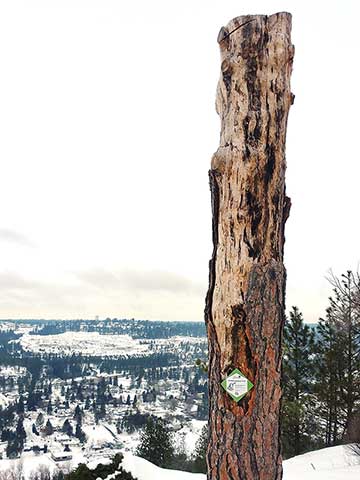Wildlife Habitat

Urban trees are valued for the many ecosystem benefits they provide such as energy conservation, carbon sequestration, air quality enhancement, and stormwater mitigation. Urban trees are also valued for the many social services and health benefits they provide. Urban trees are increasingly being valued for their wildlife habitat function.

Wildlife Habitat Trees are standing live or dead trees providing ecological niches, microhabitats, such as cavities, bark pockets, large dead branches, epiphytes, cracks, sap runs, or trunk rot. Standing dead trees, also known as snags, and dying trees are thought to benefit hundreds of species.
